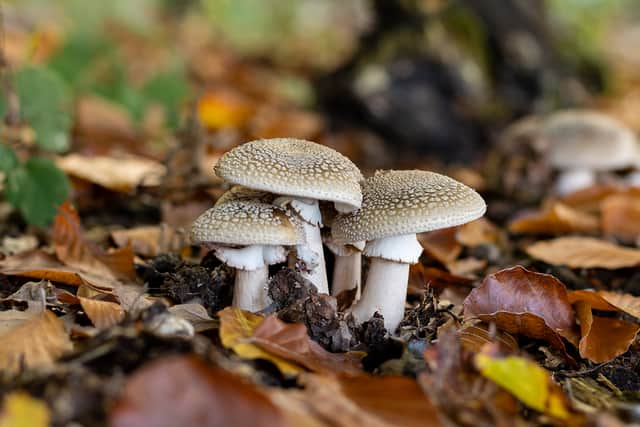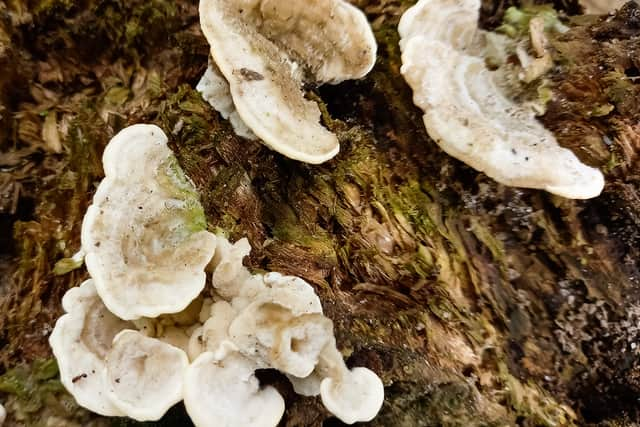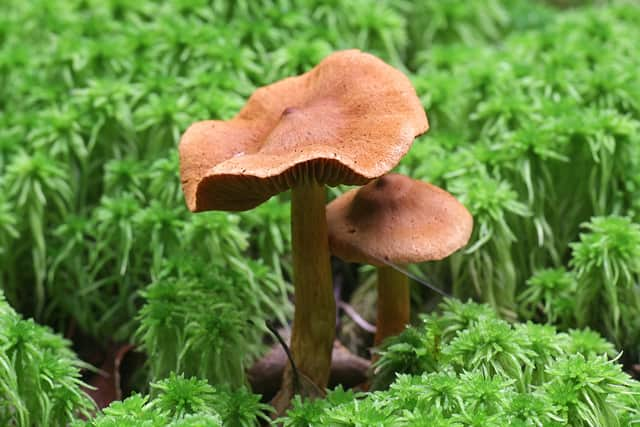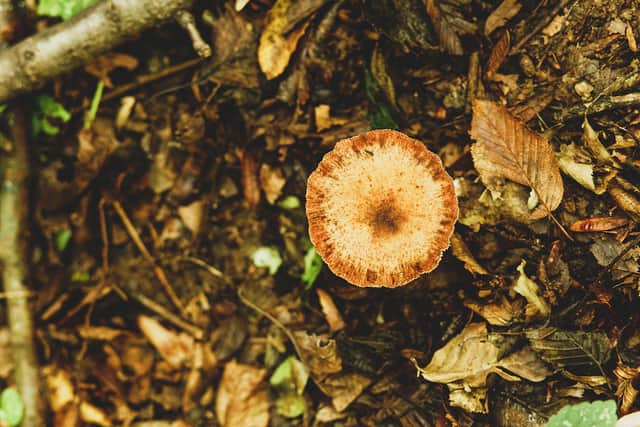Leongatha mushroom deaths: Which UK mushrooms could kill you - after family lunch suspected of killing three
and live on Freeview channel 276
They might look innocuous, but the UK's woodlands and hedgerows are home to the likes of funeral bells, destroying angels, and deadly webcaps - which could catch out all but the most experienced of mushroom hunters.
This comes after three members of an Australian family were killed - with a fourth left fighting for their life - after eating wild mushrooms at a family lunch. Police are still investigating, but say their symptoms matched death cap consumption.
Advertisement
Hide AdAdvertisement
Hide AdDeath caps - also known by their scientific name Amanita phalloides - are also common in the UK, but eating a piece the size of a small coin is enough to kill you.
Foraging for wild foods is becoming increasingly trendy once more, with a Royal Society for the Protection of Birds survey revealing up to 60% of Britons surveyed had tried foraging at least once.


Some are even reportedly reviving the age-old practice to supplement their pantries during the cost of living crisis, according to i News.
While experts advise against eating any wild mushrooms unless identified by an expert, some of the UK's natives are more deadly than others. So which ones do you need to be wary of?
Here's a few of the mushrooms you need to know about:
Advertisement
Hide AdAdvertisement
Hide AdDeath caps


Death caps - the variety suspected to be behind the deaths in Australia - are considered the world's most deadly mushroom, and cause a number of deaths each year due to being a lookalike to safe mushroom species.
The Woodland Trust warns that they are also common in the UK, and can be found growing on the ground in broadleaf woods between August and November.
The mushrooms contain a compound called alpha-amanitin, which causes the liver and kidneys to fail. If one is eaten, symptoms will start to appear within six and 24 hours, the Trust says, which can include vomiting, diarrhoea, and severe abdominal pain - followed by jaundice, seizures, coma and death.
They look similar to a number of safe, edible mushroom species, but the trust warns people to look out for their greenish-tinted caps, white stems and white gills.
Advertisement
Hide AdAdvertisement
Hide AdDestroying angels


Destroying angels and almost equally as deadly if consumed. They also grow in woodland - particularly birch woods - between July and November, according to the Woodland Trust.
They will cause similar symptoms as death caps, although the Trust warns people to look out for "a deceiving period of improvement" once their stomach pains abate, before the secondary effects of liver and kidney poisoning start to kick in.
In the same family as death caps, the Amanita virosa can be identified by the white 'skirt' found on its stem beneath the gills.
Funeral bells


The danger of Galerina marginata is betrayed by its common name - the funeral bell.
Advertisement
Hide AdAdvertisement
Hide AdThe Woodland Trust says the species is not particularly common in Britain, but can occasionally be found growing in clusters on dead trees or stumps - particularly pines - from August to November.
It contains the same toxins as the last two species, and causes similar symptoms if ingested. They have pale yellow to tan caps, often in a gradient with the edges appearing lighter.
Panther caps


Panther caps are similar in appearance to the more commonly seen toadstool - or fly agaric.
However, rather than being bright red, it has a more pale brown cap - with the same white, raised spotting. It can also be found in beech or oak woods from July to November.
Advertisement
Hide AdAdvertisement
Hide AdThe Trust warns Amanita pantherina contains a similar poison to its more famous cousin, which can impact the central nervous system - causing vivid hallucinations, confusion, a feeling of being much stronger than usual, delusions, and convulsions - even killing people in rare cases.
Angel's wings


Despite their angelic names, these mushrooms are anything but heavenly.
The snow-white Pleurocybella porrigens can be found growing on decaying wood. It is common in the Scottish Highlands and Cumbria in autumn, but rare in the rest of the UK, the Woodland Trust says.
Compounds found in the mushroom can kill, but can also leave those who eat them with permanent brain damage.
Advertisement
Hide AdAdvertisement
Hide AdDeadly webcaps


The deadly webcap - or Cortinarius rubellus - can be found across Europe, where it has killed a number of people who have mistaken it for wild chantarelle mushrooms - or even magic mushrooms.
The Woodland Trust says they grow on the ground in pine woods, particularly enjoying hiding amongst heather or bilberry.
The webcap mushroom - and some of its relatives - contains a long-lasting poison called orellanine, the Trust warns. "Initial effects kick in two to three days after ingestion. These include flu-like symptoms, headache, vomiting, kidney failure and possible death."
Fool's conecaps


The tiny fool's conecap might look cute, but it contains the same deadly toxin as death caps.
Advertisement
Hide AdAdvertisement
Hide AdUnlike many of the others on this list, the conecap - or Pholiotina rugosa - can be found right in your garden.
The Woodland Trust says they enjoy growing in leaf litter, rotting woodchip piles, sawdust, rich soil and compost - and can be found growing right across the UK.
Comment Guidelines
National World encourages reader discussion on our stories. User feedback, insights and back-and-forth exchanges add a rich layer of context to reporting. Please review our Community Guidelines before commenting.
